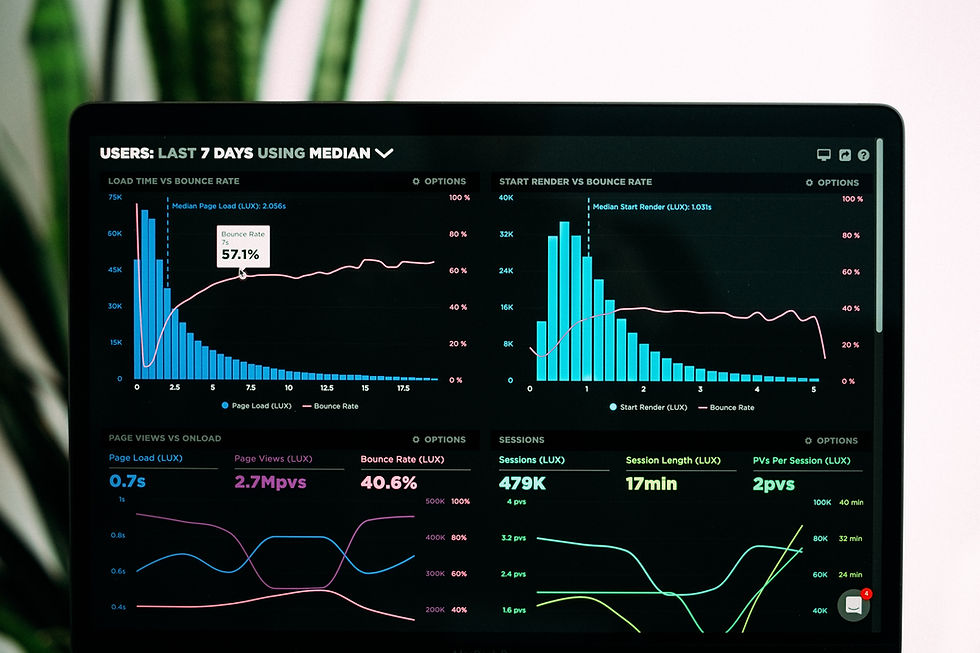Data-Driven Feature Prioritization: Leveraging Metrics for Informed Decision-Making
- Abdi Bedel
- Mar 6, 2024
- 3 min read
Updated: Apr 5, 2024
In today's competitive landscape, successful product development relies heavily on data-driven decision-making. Data-driven feature prioritization involves leveraging metrics and data analysis to inform decisions about which features to prioritize for development. By basing prioritization on empirical evidence rather than assumptions or intuition, product teams can increase the likelihood of delivering valuable features that resonate with users and drive product success.

Key Takeaways
Data-driven feature prioritization empowers product teams to make informed decisions based on empirical evidence and insights rather than intuition or assumptions.
Key metrics such as user engagement, conversion rates, and customer feedback play a crucial role in prioritizing features that align with user needs and drive product success.
Techniques like impact vs. effort analysis, cohort analysis, and A/B testing provide structured approaches to prioritize features effectively and maximize their impact.
Best practices include establishing clear goals and KPIs, regularly monitoring relevant metrics, and incorporating a mix of quantitative and qualitative data sources for holistic decision-making.
While data-driven feature prioritization offers numerous benefits, challenges such as data availability and analysis complexity may arise, which can be overcome through proper frameworks and collaboration with data analysts.
Embracing a data-driven mindset and integrating data into the decision-making process is essential for unlocking the full potential of feature prioritization and delivering exceptional user experiences.
Understanding Data-Driven Feature Prioritization
Data-driven feature prioritization entails using quantitative and qualitative data to prioritize features based on their potential impact on user satisfaction, engagement, and conversion. It shifts the focus from subjective opinions to objective insights, allowing product teams to make informed decisions that align with business goals and user needs.
Key Metrics for Feature Prioritization
1. User Engagement Metrics:
Metrics such as active users, session duration, and retention rate provide insights into how users interact with the product. Features that drive high engagement metrics may indicate areas of strength and inform prioritization efforts.
2. Conversion Metrics:
Conversion metrics like conversion rate, click-through rate, and conversion funnel analysis measure the effectiveness of features in converting users into customers. Prioritizing features that contribute to higher conversion rates can directly impact revenue generation and business growth.
3. Customer Feedback Analysis:
Qualitative feedback from users through surveys, reviews, and support tickets offers valuable insights into feature satisfaction and pain points. Analyzing customer feedback helps identify areas for improvement and prioritize features that address user needs effectively.
Data-Driven Techniques for Feature Prioritization
1. Impact vs. Effort Analysis:
Quantifying the impact of features using data metrics and comparing it to the effort required for implementation helps prioritize features that offer the highest value with the least effort. This approach ensures that resources are allocated efficiently to features that drive the most significant impact.
2. Cohort Analysis:
Cohort analysis tracks user behaviour patterns over time, allowing product teams to identify feature usage trends and performance across different user segments. Prioritizing features based on cohort analysis insights ensures that development efforts align with user preferences and behaviours.
3. A/B Testing:
A/B testing methodology involves testing feature variations to determine their impact on user behaviour. By conducting A/B tests, product teams can validate hypotheses and prioritize features based on empirical evidence of their effectiveness in achieving desired outcomes.
Best Practices for Data-Driven Feature Prioritization
Establishing clear goals and KPIs for feature prioritization ensures alignment with business objectives.
Regularly monitoring and analyzing relevant metrics helps product teams stay informed and responsive to changes in user behaviour and market dynamics.
Incorporating a mix of quantitative and qualitative data sources provides a holistic understanding of user needs and preferences, guiding prioritization decisions effectively.
Challenges and Solutions
While data-driven feature prioritization offers numerous benefits, challenges such as data availability and analysis complexity may arise. Product teams can overcome these challenges by adopting data-driven decision-making frameworks, investing in data infrastructure, and collaborating closely with data analysts to interpret insights accurately.
"Data-driven feature prioritization allows us to make decisions based on real user behaviour rather than gut feelings, leading to more impactful product development." - Abdi Bedel, Product Manager
Conclusion
Data-driven feature prioritization is a powerful approach to product development that empowers teams to make informed decisions based on empirical evidence and insights. By leveraging metrics and data analysis techniques, product teams can prioritize features effectively, drive user satisfaction, and ultimately achieve product success in the market.
Embracing a data-driven mindset and integrating data into the decision-making process is key to unlocking the full potential of feature prioritization and delivering exceptional user experiences.





